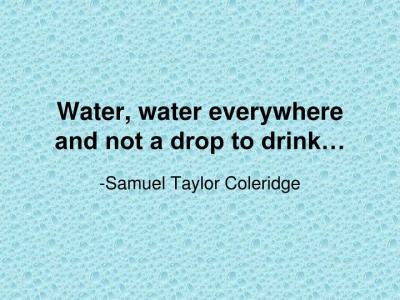
Now that you've got some basic planning and preparing underway, let's spend Week 4 talking about emergency food and water storage.
You may usually have enough food on hand to last a few days, but what about water?
What if you needed enough food and water to get by for 2 weeks or longer?
This week we'll get into some of the nitty-gritty about where to start and how to plan for food and water in an emergency. If you're short on time this week and looking for a one-stop resource for both, check out this brochure developed by FEMA and the Red Cross.
Creating an extra supply of food and water will create additional expense, but you don't have to do it all at once. Buying a little each week will spread out the cost while helping you avoid developing a cache full of items that expire at the same time. If you'd rather make quick work of this task with a readymade shopping list or prepacked emergency food kits, there are many options to be found online and in the community.
Water
Living in Clatsop County, it is hard to imagine running out of water-- it is all around us! But after an earthquake, the water sources we usually rely on may be unavailable or contaminated. For this reason, it is a good idea to develop a water storage plan.
First, identify all the things you will need water for.
Will you be storing it for home use or putting it in an evacuation bag or both? In addition to water you need for drinking and food preparation, think about uses that may not require purified water, e.g. cleaning, animal use.
As a general rule, plan for 1 gallon per person/day for drinking and sanitation. If you live alone, you may invest in individual bottles and gallon containers, but keep in mind that the shelf life is limited due to the type of plastic used to make them.
For any size group/family, consider investing in a water storage barrel. The upfront cost is more, but they are designed for long-term use, simplify the process, and reduce waste. Read more on the FEMA website for more information regarding water storage and treatment.
For uses that don't required purified water, think about attaching a rain barrel(s) system to your gutter system. There are many options online for purchasing a readymade barrel or do-it-yourself.
More resources from CDC for Creating and Storing an Emergency Water Supply can be found here.
Food
When planning food for emergencies, keep in mind these important tips:
- Store at least a several-day supply of non-perishable food.
- Choose foods your family will eat and don't store new things without trying them first.
- Remember any special dietary needs.
Good options for emergency storage are
- Ready-to-eat canned meats, fruits, vegetables and a can opener
- Protein or fruit bars
- Dry cereal or granola
- Peanut butter
- Dried fruit
- Canned juices
- Non-perishable pasteurized milk
- High-energy foods
- Food for infants
- Comfort/stress foods
When loss of power/water compromises food safety and sanitation, it is important to understand these "dos and don'ts".
And whether you're cooking at home or outside, if you're relying on alternative cooking methods, spend some time becoming familiar with what that looks like before the emergency using different types of cooking methods. If you think an outdoor fire might be your cooking source and you haven't done a lot of camping before, brush up on cooking while camping tips to get ready.
Once you've got your food storage established, develop a system for cycling through it to ensure your supplies don't extend their shelf life before you get to them-- this strategy relates back to "buy what your family will eat". Rotating food storage using a simple "first-in-first-out" approach that eliminates waste and reinforces your new preparedness habits!




